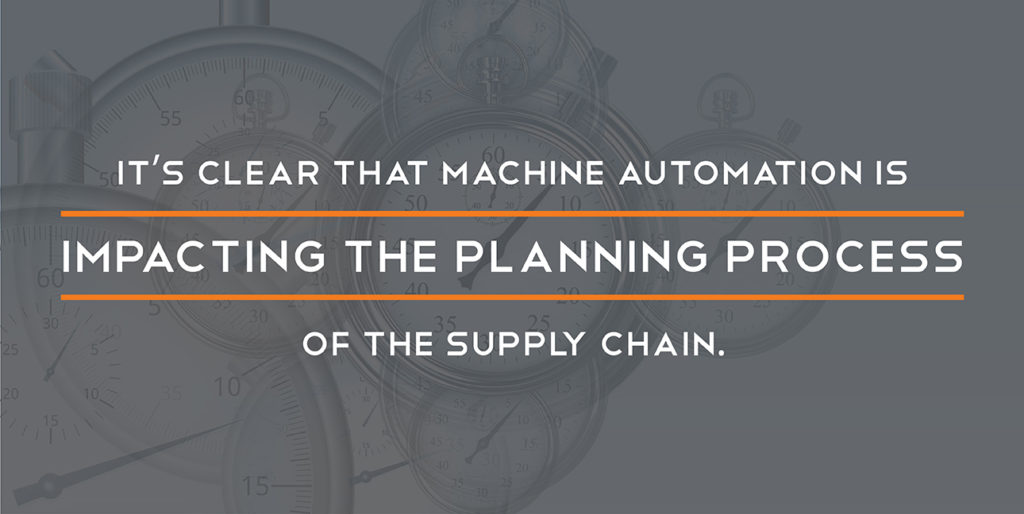Navis, a part of Cargotec Corporation, recently concluded a global port terminal survey and found that unsurprisingly, machine automation is continuing to grow and is predicted to expand.
The research revealed that 30% of customers believe automation could increase productivity by 26-50%, and 29% believe automation could reduce operational costs by 26-50%.
It’s clear that machine automation is impacting the planning process of the supply chain. Kinaxis suggests that people are making extensive investments in advanced planning techniques to bring more automation and standardization into their planning process. With machine intelligence growing, companies must make the decision to either keep up with the progress or find new ways to manage their supply chain.
Machines effect on supply chain management
Many processes that humans were once doing within supply chain management can now be automated. Automation can provide accurate information and quick solutions to problems, saving companies time and money.
Eventually, the transport chain could become fully-automated and not need human beings to manage it. Although many technology barriers currently stand in the way of full-automation, key advances are being made daily. Some examples include collaborative robots and self-driving vehicles. Machines have potential to save the supply chain a lot of time and money, increasing productivity and reducing costs.
Where humans come in
We know that full-automation is unlikely to happen soon, and that the need for humans is still relevant, but where does human talent fit in? Automation provides an ease of access to information and problem recognition, saving time for the company or organization, but it doesn’t offer the same quality of solution that a human can.
Working alongside machine automation, humans can save time and complete tasks to a high quality through a uniquely-human understanding of information, process, and goals.
In the coming future, robot technology and humans will be working side-by-side, forcing companies to determine what activities are best suited for machine intelligence and which are best suited for humans. One conclusion suggests that, “a global semi-automatic system that improves the decision making process is essential.” There is no one-size-fits all plan to make the most of the human and machine relationship for companies or systems like supply chain management.
Companies should look at where the productivity could be increased or costs reduced, and assign machine automation to those tasks while also utilizing their employees for other tasks that require more attention and time.

